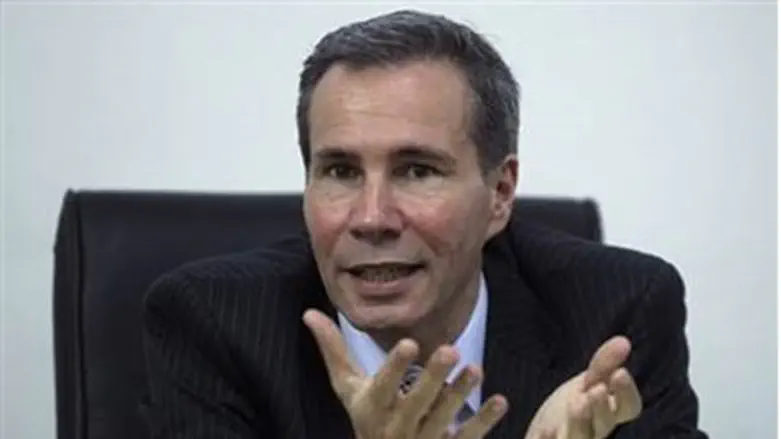
Argentine prosecutor Alberto Nisman (51), who accused President Cristina Kirchner of obstructing a probe into a 1994 Jewish center bombing, was found shot deadMonday, just hours before he was due to testify at a congressional hearing.
Given the timing of his death and the threats he received, there is a high suspicion of a framed suicide, but that leads to the question of who committed the murder.
The details of the case as well a long history of overseas assassinations suggest the culprit could be Iran, Christopher Dickey postulated in the Daily Beast Monday.
Looking at the official communiqué about Nisman’s death issued by Argentina’s Ministry of National Security on Monday morning seems only seems to raise more questions.
Nisman's body was discovered Sunday night in his apartment on the 13th floor of Le Parc Tower.
Ten Argentine Federal Police force members had been assigned as bodyguards, but were not deployed when he was at home.
Members of the team alerted Nisman's secretary on Sunday afternoon that he was not responding to phone calls. When it was determined he was not answering his doorbell either, family members were notified.
Nisman's mother and the bodyguards tried to enter the apartment but found the door locked from the inside. They called the building maintenance staff who then called a locksmith.
When Nisman's mother and the bodyguards entered the apartment, they found Nisman in the bathroom - his body blocking the door. They called police immediately who then entered the bathroom.
Nisman was on the floor with a .22 caliber pistol and one empty shell casing nearby.
That bizarre scene will leave behind much speculation and cast a net of conspiracy theories, quite similar to the AMIA bombing Nisman was investigating.
While no one was ever charged in that case, Nisman accused Tehran of planning and financing the attack and Hezbollah operatives of carrying it out.
Nisman's theory was not universally supported, but in the world of intelligence, there is little question Iran was behind the bombing, which took place in the early 90s during a period when Israel, Iran and Hezbollah were frequently attacking each other.
Iran was also known for targeting any opposition figure who might be considered dangerous.
18 opponents of the Tehran regime were murdered between 1987-1993 and Hezbollah carried out 200 serious attacks (lon the orders and funding of Iran) between 1989-1996.
By the late 1990s, the Iranian government apparently decided to slow these operations after several of them started too receive too much international condemnation and outrage.
Relations between the Israel, Iran and Hezbollah have also since settled into an icy standoff, but renewed war talk by the Lebanese terror group's leader Hassan Nasrallah may have been the impetus to violence.
Last week, Nasrallah boasted that Hezbollah has weapons that can strike anywhere in Israel. “We have made all necessary preparations for a future war,” he said.
Then on Sunday, the Israeli Air Force killed Jihad Mugniyeh, the son of Imad Mughniyeh, a senior Hezbollah officer who was also killed by Israel several years ago. Six other Hezbollah fighters were killed in the attack, as well.
Those killed in the strike were reportedly assisting terrorists in preparing missiles for launch against Israel.
And as for, Alberto Nisman, it is possible he was just another in a long line of assassinations between the warring Israel and Iran.